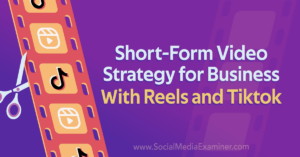The penetration of the internet, the emergence of smart devices and the adve,nt of next-generation technologies have provided a fillip to digital transformation in enterprises worldwide. The HR tech and HRMS (human resource management system) are no exception to the ubiquitous impact of digitisation.
The COVID-19 pandemic has further provided an impetus to digitisation and unlocked its tremendous potential to redefine the sector for the better.
The harnessing of technology in HR-tech and HRMS has proved to be a boon for enterprises. It has automated manual tasks, allowing human resource professionals to focus on their core functions.
It also boosts operational efficiency, incurs savings in time and resources, facilitates seamless collaboration and an uninterrupted flow of communication.
By conferring these benefits, it is a key enabler to achieving OUTCOMATION- a process of attaining tangible business outcomes through leveraging cutting-edge technologies.
As we leap into the post-COVID world, we foresee firms willing to go the extra mile for employees. Here, the technology will be an enabler to ensuring a superior experience. Furthermore, technology will make further inroads into HR-tech and HRMS and thereby impact tangible business outcomes.
Here are the top technologies that are expected to redefine HRTech and HRMS in the near future.
Artificial intelligence
The use of artificial intelligence(AI) is gaining currency with this technology taking over mundane tasks and thereby enabling human resource personnel to focus on cognitive functions. The use of AI is increasingly becoming common to identify and shortlist suitable applicants matching the required skill set as part of the screening process.
AI also bolsters learning and development efforts by customising e-learning modules according to the learning pace of every employee and charting a roadmap of his career growth by mapping skillsets against job profiles.
Cloud technology
Cloud technology plays a pivotal role in managing diverse workforce across geographies and fostering seamless collaboration. It serves as a central repository of enterprise resources, thereby ensuring data privacy and security.
By eliminating the stacks of paperwork and red-tapism, the adoption of cloud technology makes firms extraordinarily agile and responsive to the dynamic economic scenario. It also facilitates the learning and development goals by serving as a one-stop solution to e-learning- from lessons, assignments, feedback and performance measurement.
A PwC report pegs the HR cloud technology market at $148 billion. We foresee cloud technology to gain further traction in the post-COVID era, with efforts being made to ensure more agility, less downtime, less frequency for the need of updates and so on.
Virtual and augmented reality
Both virtual reality and augmented reality possess the inherent potential to redefine experiences. Firms can harness this value proposition to augment their learning and development outcomes through 360 walkthroughs and immersive experiences that will simulate real-life situations and equip employees with a nuanced understanding of tackling them in a better way.
Virtual and augmented reality are great tools to ensure employer branding. Initiatives such as a virtual tour of the workplace during the onboarding of new recruits will help them gain a first-hand understanding of the work environment.
Similarly, in combination with AI, AR and VR can be used for interviews to extract and analyse critical information from candidates’ faces to aid the decision-making process for recruiters.
Data analytics
Data has become a formidable weapon for firms to enlighten and inform the firms. Organisations deal with a lot of data related to employee demographics, behaviours, performance, etc.
The sorting of relevant data and their subsequent analysis can equip firms with strategic insights that lead to informed decision-making. For instance, the mapping and measurement of employee performance help assess their overall contribution to the business outcomes and identify suitable career profiles for them in the future.
Data analytics finds usage in all HR segments- performance management, learning and development, recruitment, rewards, employee engagement and retention and much more.
Blockchain
Experts are already betting on the potential of blockchain in every segment. A Gartner report predicts that blockchain will unlock business value worth 3.1 trillion by 2030. Its key value propositions of distribution, encryption and decentralisation will equip organisations with the endless possibilities of combining technologies to reap their benefits and reimagine the way employees, vendors and firms interact, communicate, create and exchange value.
Blockchain can be used to conduct background and employment history checks by tokenising the identity of candidates and thereby eliminate the chances of fraud. Storing employee data on a blockchain will also ensure the utmost level of data privacy and confidentiality besides serving as a database for human resource personnel.
As the gig economy becomes mainstream in the post COVID era, blockchain can be used to execute smart contracts that confer immutable rights and duties. For instance, the use of blockchain can ensure the automatic disbursement of payment once the workers complete the assigned tasks, improving their satisfaction and facilitating retention.
The onus is on the HR function to spearhead the digital transformation in enterprises. HR professionals must be able to educate the top leadership about the potential of newer technologies in achieving business goals.
From deploying the right mix of technology, identifying functions to be automated and training the workforce in adopting the technology, HR assumes a pivotal role in harnessing the power of technology to reap its numerous benefits. It is noteworthy that human experience and not technology should be at the centrepiece of digital transformation.
Simultaneously, the C- suite executives should serve as role models of technology usage to inspire the rest of the workforce to follow suit. In a nutshell, technology will foster OUTCOMATION — a process of achieving tangible outcomes by aligning employee performances to organisational goals.
(Disclaimer: The views and opinions expressed in this article are those of the author and do not necessarily reflect the views of YourStory.)










